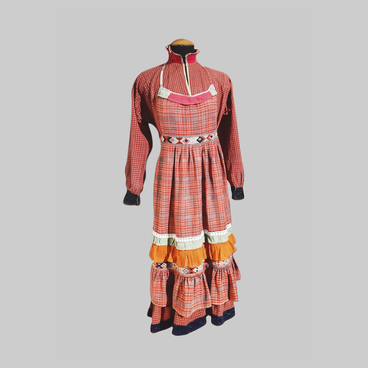The second quarter of the 18th century marked a rapid growth in trade in the Southern Ural as the Russians started developing this territory. Although most merchants in the 19th-century Chelyabinsk were poorly educated, they had accumulated significant capital, which allowed them to build large houses for their families and furnish them in accordance with the concept of luxury and fashion trends of that time. The exhibition showcases a fragment of a merchant house living room typical of the late 19th and early 20th centuries. Such living rooms were usually decorated with a fireplace.
The La Mondiale fireplace was manufactured in the early 20th century by the joint-stock company Le Chauffage Pardon in the French commune of Ivry-sur-Seine. In addition to heating appliances, the company also manufactured stoves and kitchens, washing machines, gas boilers, plumbing fixtures, and furniture. Fireplaces were classified as long-term or continuous burning heating devices. Anthracite, a type of bituminous coal, was used as fuel. Such fireplaces could heat a room with a volume of up to 90 cubic meters. To provide continuous heat, it was enough to use the fireplace twice a day, burning some 6 to 10 kilograms of coal. A fireplace could be installed next to any chimney, which was connected to it using a special valve.
Continuous burning stoves were invented in the late 19th century. They came to Europe from the U.S. Using them as a reference, French manufacturers started making continuous burning fireplaces. They worked according to the same principle but made it possible to look at the fire, as in a conventional open fireplace.
Continuous burning heating devices took up less space compared to other types of stoves and, thanks to uniform heat emission, could maintain a constant temperature in the room.
The fireplace is made of cast iron. It is decorated with blue and green enamel with floral ornaments in the front and with a geometric three-dimensional casting along the perimeter. The cast-iron door is decorated with the images of flower buds and three cupids touching a globe. The face of a lion is depicted under the handle.
The first fireplaces date back to ancient Rome. They were called ‘caminus, ’ which means ‘open hearth.’ In Russia, a different device has been used from time immemorial: the Russian stove. Fireplaces were seen solely as objects of luxury. The first fireplaces were brought to Russia during the reign of Peter the Great when the Russian elite was fascinated with all things European.
The La Mondiale fireplace was manufactured in the early 20th century by the joint-stock company Le Chauffage Pardon in the French commune of Ivry-sur-Seine. In addition to heating appliances, the company also manufactured stoves and kitchens, washing machines, gas boilers, plumbing fixtures, and furniture. Fireplaces were classified as long-term or continuous burning heating devices. Anthracite, a type of bituminous coal, was used as fuel. Such fireplaces could heat a room with a volume of up to 90 cubic meters. To provide continuous heat, it was enough to use the fireplace twice a day, burning some 6 to 10 kilograms of coal. A fireplace could be installed next to any chimney, which was connected to it using a special valve.
Continuous burning stoves were invented in the late 19th century. They came to Europe from the U.S. Using them as a reference, French manufacturers started making continuous burning fireplaces. They worked according to the same principle but made it possible to look at the fire, as in a conventional open fireplace.
Continuous burning heating devices took up less space compared to other types of stoves and, thanks to uniform heat emission, could maintain a constant temperature in the room.
The fireplace is made of cast iron. It is decorated with blue and green enamel with floral ornaments in the front and with a geometric three-dimensional casting along the perimeter. The cast-iron door is decorated with the images of flower buds and three cupids touching a globe. The face of a lion is depicted under the handle.
The first fireplaces date back to ancient Rome. They were called ‘caminus, ’ which means ‘open hearth.’ In Russia, a different device has been used from time immemorial: the Russian stove. Fireplaces were seen solely as objects of luxury. The first fireplaces were brought to Russia during the reign of Peter the Great when the Russian elite was fascinated with all things European.



